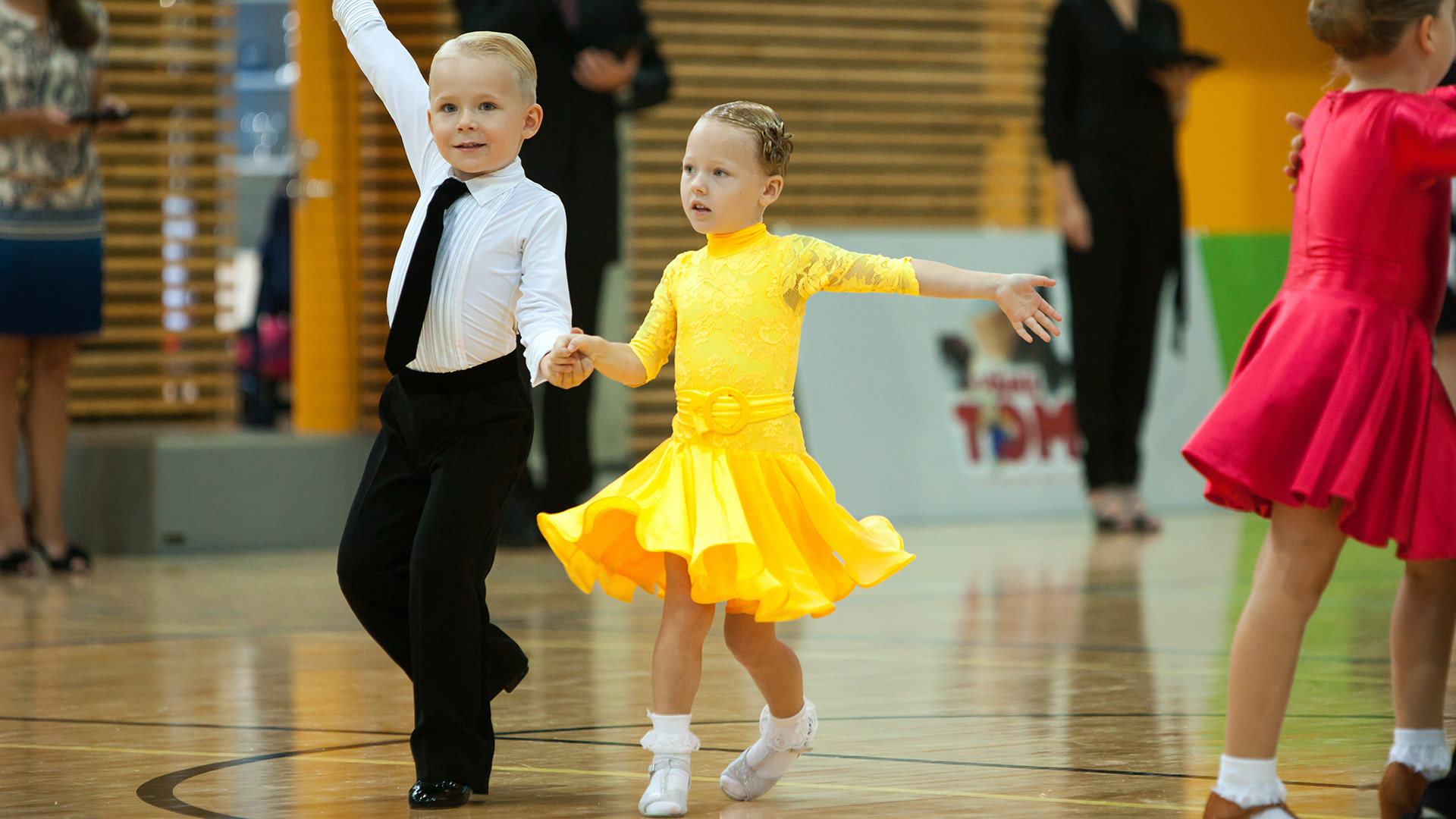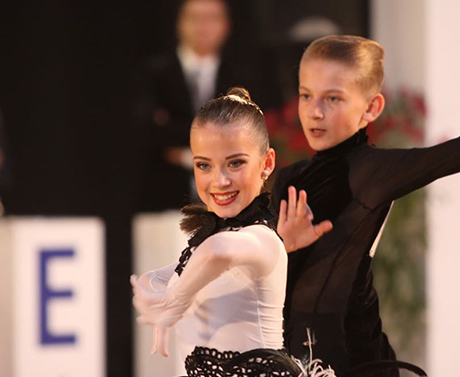If the title of this article got your attention, you have probably thought of taking your child to a ballroom dance studio.But , if you feel that you are lacking information or „Effectiveness“ of this sport activity, let me make it easier for you…. Here are a few on point statements on why your child should definitely get involved in ballroom dancing.

Why should your child Ballroom Dance?
Music & Movement

I´d like to start this off from the roots. Do you remember the first time you heard music? Of course you do! You have heard the beat, the melody, a singing voice perhaps. It might have sounded starnge at first, but it was so irresistible. Then, there was no explanation to your further actions. You started moving your body, wiggled your hands and legs, and I bet you were smiling too. The best part of this , all of it was natural.
Music has a large healing effect on the body. Music makes training more effective. Researchers have found that doing high intensity interval training while hearing music is much more enjoyable and effective than training without music. Particularly, it is ballroom dancing where the dances have different intensities and the whole workout is based on music. According to a study published by Nature Neuroscience, there are a number of musical pieces that increase the production of pleasure chemical dopamine in the brain which makes a child feel more energetic and joyful. Having a good mood is the basis for staying healthy. According to researchers, optimistic music makes people happy.
From Birth , everyone has the natural feel for music. We can dance to, pretty much, anything. However, if our dance is lacking structure, it will look repetitive, a bit primitive and probably chaotic. The core of ballroom dancing is based entirely on structure, which almost instantly gets applied to music. With practice and some help from instructors, your child will not only develop a stronger inner feel for music ,but will be able to apply their moves to it. Not to mention , that it will be done with a partner.
Body Development
You can spot a ballroom dancer from far. A bit of loftiness, flow of movement, and the most commonly noticeable factor – The Posture. “But, Ballet also has The Posture” you might object. True. But, there is an obvious flow in directional movement to a ballroom dancer, which may not be noticed in a ballet dancer. To give you an example: it is fascinating to watch a ballroom dancer go through a crowded place. Since floor craft is trained from an early age, you probably will not see them collide with anyone. Besides, ballroom dancing has a much higher contrast in movement. From slow and continuous to sharp and static. Try running for a minute and a half, make a sudden stop to catch a quick breath, then run faster for another minute and a half. Oh, and while you’re at it, keep your hands to the sides and don’t drop them down, and do it all to the music with a partner. Got the picture?
Dancing trains the whole body. All muscle groups of the body are targeted, while at the same time, much headwork is required and thinking along is critically important. Dancing is especially recommended for children with persistence problems. It is amazing what could be achieved with just a year of training. Many parents bring their kid to dance training even before school specifically to exercise persistence in a playful way to get better along in school. A good trainer can direct the child’s energy to the right activity.
Art & Culture
Dancing is bodily expression to music. Regardless, if a dancer does choreography or improvises.(which, essentially, means the same thing, since improv is a choreography broken down and danced in a chaotic pattern). In case of ballroom dancing, expression to music happens with a partner. The culture behind every ballroom dance has been developed over the years, which means, your child will be exposed to some history. Of course, the cultural and historical details for each dance will vary depending on the amount of knowledge of the instructor, but generally, the idea of each dance will be clear. The beginning of the learning process will be strict and bold (“This is Cha Cha, it’s coming from Cuba, and this is how you do it…”), but further into the future, more emphasis will be put into the character of each dance, and the expression it could be danced with.
Mutual Love & Respect

We live in a society where violence is not permissive. And, indeed, this is how it should be. But, unfortunately, it seems that mass media promotes more violence, while trying to prevent it. In the age of technology and easy-to-reach information, with the graphical content that accompanies it, we are aware of bad news much sooner, and our children are no exception. At early age common sense and rationality are at early stages of development, thus everything your child sees is taken “As Is”. Which means,
So, how can ballroom dancing help to promote peace? Easy! Lead by Example.
In 1994, Pierre Dulaine, a ballroom dancer founded Dancing Classrooms, a non-for-profit with a mission to use the vocabulary of ballroom dance to cultivate the positive feelings that are inherent in every child. Kids are required to partner up, learn different dances together and eventually showcase at a local dance competition. Later, Pierre took the project to his home-country – Jaffa, Israel, where children of long-term enemies – Jews and Arabs, had to learn how to dance together. The results where quite fascinating.
In Estonia we have received feedback from schools about how dancing helps reduce the gender gap between boys and girls and the children whose school programs include dancing get equally along with each other and during making friends it’s not important whether it’s a boy or a girl. During the training sessions of competitive dancing, elementary etiquette rules are also introduced and it’s nice to see when a boy can wear his tie and a girl knows not to sit with legs apart while wearing a skirt.
Dreams and Goals
Engaging in competitive dancing teaches persistence to a child along with the fact that to achieve something, one needs to work and things in life just don’t happen overnight. It is necessary to strive and be persistent.
Thinking back, almost every kid I have met in the dance industry wanted to become a champion. Some have stuck to their grandé dreams and reached their goals. Some had smaller goals and did their best to achieve them. It is fascinating to observe the physical and emotional involvement of all – the kids, parents and coaches. And with hard work, to see the dream come true in reality, right in front of you, as a work of art… Always inspirational!
So, you still question if your kids should Ballroom Dance?
Ballroom Dance in Leevi dance studio
Get in touch with us to register your kid (or you!) to a first dancing lesson. You are welcome to come and try the first lesson for free!